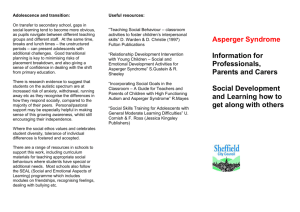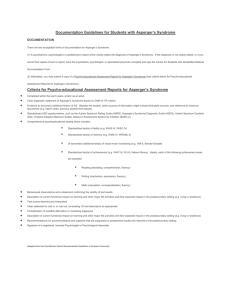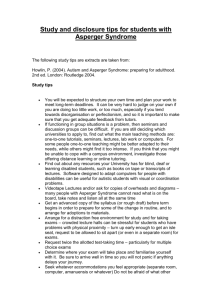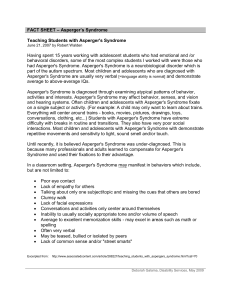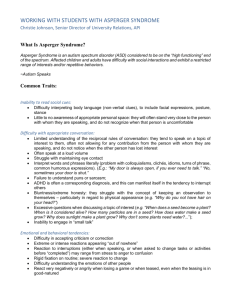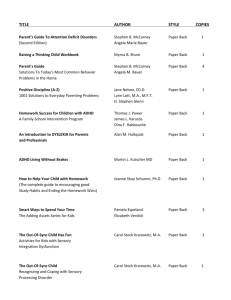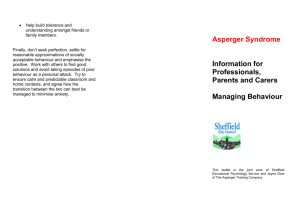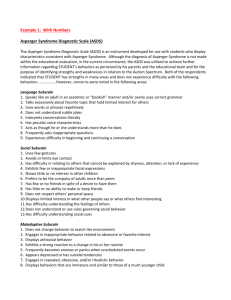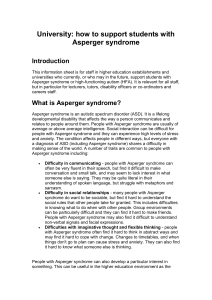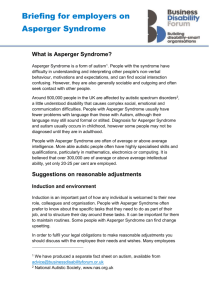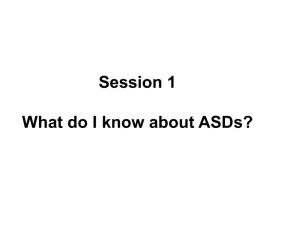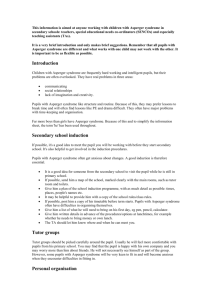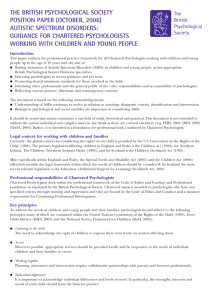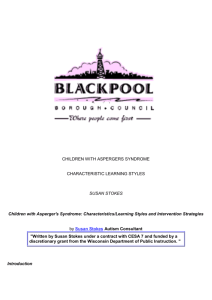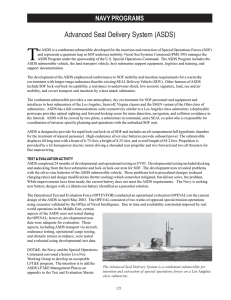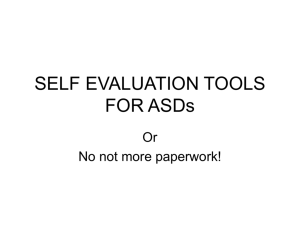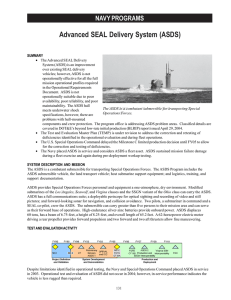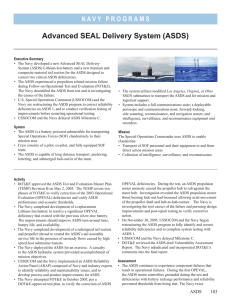Asperger Syndrome Diagnostic Scale (ASDS)
advertisement
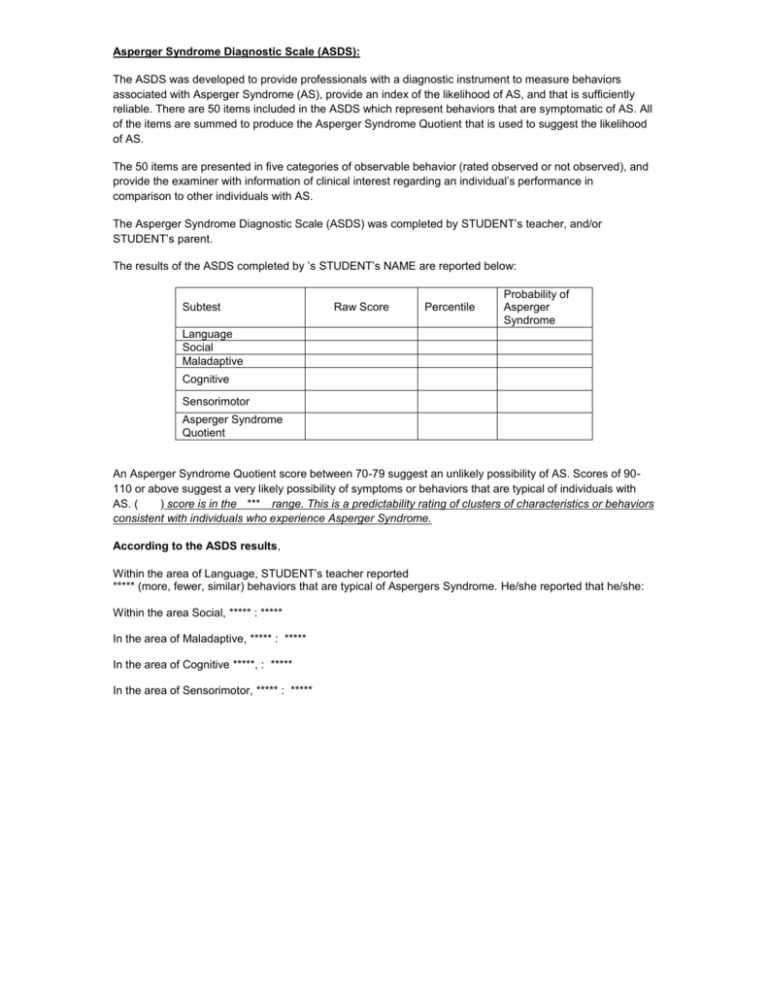
Asperger Syndrome Diagnostic Scale (ASDS): The ASDS was developed to provide professionals with a diagnostic instrument to measure behaviors associated with Asperger Syndrome (AS), provide an index of the likelihood of AS, and that is sufficiently reliable. There are 50 items included in the ASDS which represent behaviors that are symptomatic of AS. All of the items are summed to produce the Asperger Syndrome Quotient that is used to suggest the likelihood of AS. The 50 items are presented in five categories of observable behavior (rated observed or not observed), and provide the examiner with information of clinical interest regarding an individual’s performance in comparison to other individuals with AS. The Asperger Syndrome Diagnostic Scale (ASDS) was completed by STUDENT’s teacher, and/or STUDENT’s parent. The results of the ASDS completed by ’s STUDENT’s NAME are reported below: Subtest Raw Score Percentile Probability of Asperger Syndrome Language Social Maladaptive Cognitive Sensorimotor Asperger Syndrome Quotient An Asperger Syndrome Quotient score between 70-79 suggest an unlikely possibility of AS. Scores of 90110 or above suggest a very likely possibility of symptoms or behaviors that are typical of individuals with AS. ( ) score is in the *** range. This is a predictability rating of clusters of characteristics or behaviors consistent with individuals who experience Asperger Syndrome. According to the ASDS results, Within the area of Language, STUDENT’s teacher reported ***** (more, fewer, similar) behaviors that are typical of Aspergers Syndrome. He/she reported that he/she: Within the area Social, ***** : ***** In the area of Maladaptive, ***** : ***** In the area of Cognitive *****, : ***** In the area of Sensorimotor, ***** : *****

